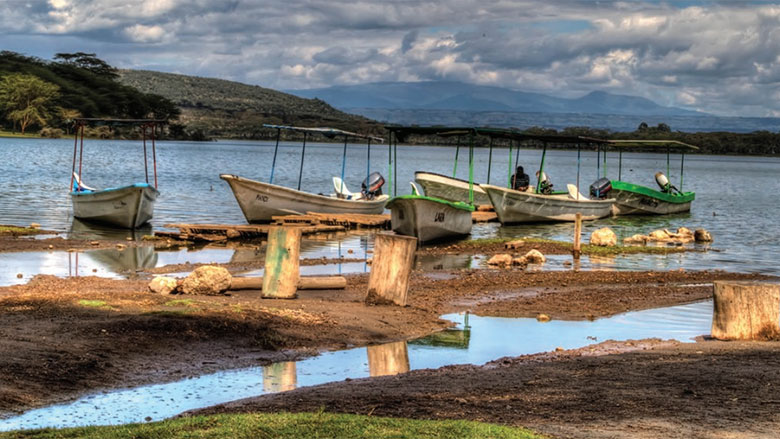Climate resilient growth and poverty reduction in Africa depend on the sustainable, coordinated management and development of its transboundary waters. Key sectors that contribute to growth such as energy, agriculture, transportation, and fisheries depend on development and management of water. Most of the water in Africa is shared by multiple countries. The transboundary nature of Africa’s rivers, lakes and aquifers add considerable political, technical, environmental, and financial complexity to their sustainable development, often resulting in stalled investments or the adoption of sub-optimal development choices that have a real and significant cost.
Fostering cooperation to optimize development outcomes in complex African river basins requires a nuanced understanding of context, especially the political and economic incentives facing local actors. Decisions related to water resources management are shaped by a range of considerations from traditional economic factors and physical constraints to political considerations such as the need to manage political support within a single state or to navigate complex international relationships with riparian countries. Exploring political economy realities can reveal capacities and systems that support pockets of effectiveness or have produced successful reforms in the past. It can also reveal the underlying logic behind seemingly irrational policy decisions or apparently dysfunctional institutional arrangements. This in turn provides the basis for thinking about how to work with, around, or gradually reshape existing systems to achieve developmental policy goals.
Key Variables of Political Economy Analysis
Political Economy Analysis for Transboundary Water Resources Management in Africa introduces key concepts and variables for the transboundary water context. Structural and regional historical factors are beyond the immediate control of local actors and set the underlying context. Position on the river or basin is an important starting point for analyzing such factors, with hydrological, geographic, economic and climate issues also playing a role. Institutions are the ‘rules of the game’ which emerge from the interaction of formal and informal arrangements and shape behavior between states, ministries, and individuals. The national political-institutional environment interacts with the geopolitical-institutional environment, jointly shaping the space for reform. Rents are a further key variable. Transboundary water resources management deals with structuring benefits between countries; and the structure of benefit sharing should align with the political realities of the basin—both the relative power among riparians (Riparian is defined as “relating to or situated on the banks of a river”. Oxford English Dictionary.) countries vis-à-vis each other, as well as the relative power and influence of individuals and groups within each riparian.
See the full Guidance Note (PDF)
Benefits of the Guidance Note
Political Economy Analysis for Transboundary Water Resources Management in Africa provides practical advice to help water resource management specialists carry out strong, operationally relevant analysis that contributes to new ways of thinking and working, and ultimately to achieving better results. The note draws on the numerous frameworks that have been developed and the many lessons learned about how to design and implement politically sensitive programming. Importantly, while political economy assessments provide insights into the non-technical drivers of decision-making, they rely on a sound understanding of the technical bottlenecks that need to be resolved, as well as the economic and social costs and benefits of a given intervention.
The note explores how to carry out ‘problem-driven’ political economy analysis for complex regional, multi-sector development challenges. This requires setting a clear and focused scope. It involves describing the relevant technical, structural, and regional historical issues, as well as the institutional arrangements at basin, national, and sector levels, drilling down to the underlying drivers. Analysis concludes with concrete recommendation for the design and implementation of development solutions.
